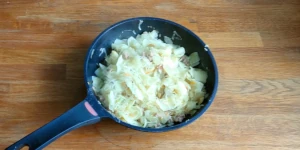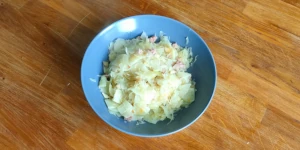
Łazanki - Polish pasta with cabbage and mushrooms
Jump to recipe
Every country's cuisine contains culinary treasures that take us on a journey through history, taste, and culture. Poland is certainly one of those countries that abounds in unique flavors and dishes. One such unusual dish is "łazanki".
This is a dish based on simple ingredients that, when combined, create a real feast of flavors. The main ingredients here are pasta, cabbage, and onion. Additionally, we can also add meat or mushrooms. Bathroom pasta is in the form of small squares, somewhat like a mini version of lasagna.
How was łazanki created?
One theory says that the name of this square pasta comes from the Italian lasagne. Of course, there are some similarities but also significant differences in how this dish was created.
But, it was Queen Bona Sforza, who was the wife of King Sigismund I the Old, who imported many Italian products to Poland. Among them, you can find many vegetables and kinds of pasta.
According to linguists, the word "łazanka" actually comes from the Italian word "lasagne". It is thus possible that this dish was transformed from the Italian form of lasagna to lasagna over the centuries. Yet, it is possible that this dish was named so because of the similarity.
Łazanki is a real gem of Polish cuisine. This is a dish that combines history, tradition, and taste. Though simple in ingredients, it is rich in culinary experience. If you haven't had a chance to try this unique dish yet, it's worth it.
Recipe informations:
Ingredients
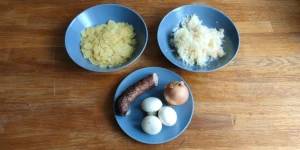
- 120 g of 'lazanki' or 'quadretti' pasta
- 1/4 bunch of sausage - optional
- 200 g sauerkraut or regular cabbage
- 1 medium onion
- about 5 pieces of champignons or forest mushrooms
- vegetable oil for frying
- half a teaspoon of salt and pepper
Steps
1. Step
2. Step
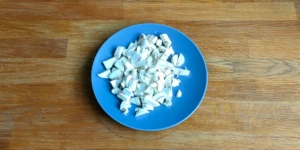
3. Step
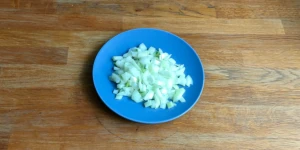
4. Step
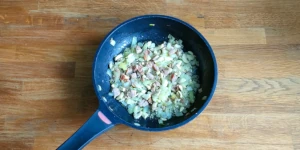
5. Step
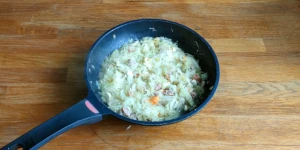
6. Step
